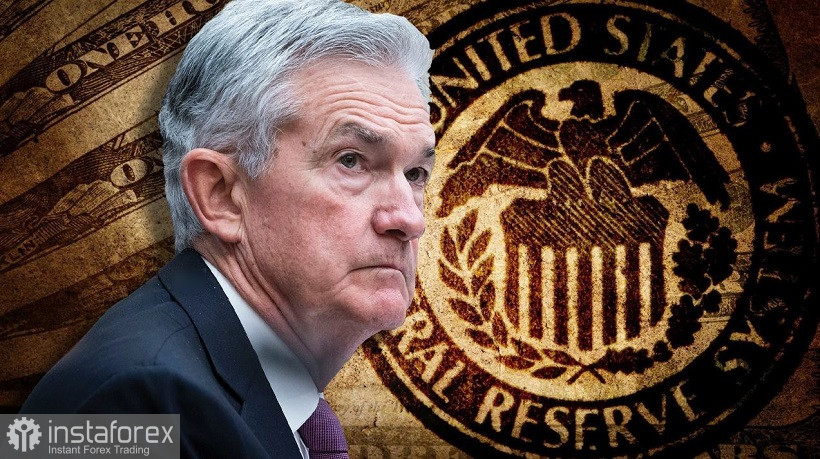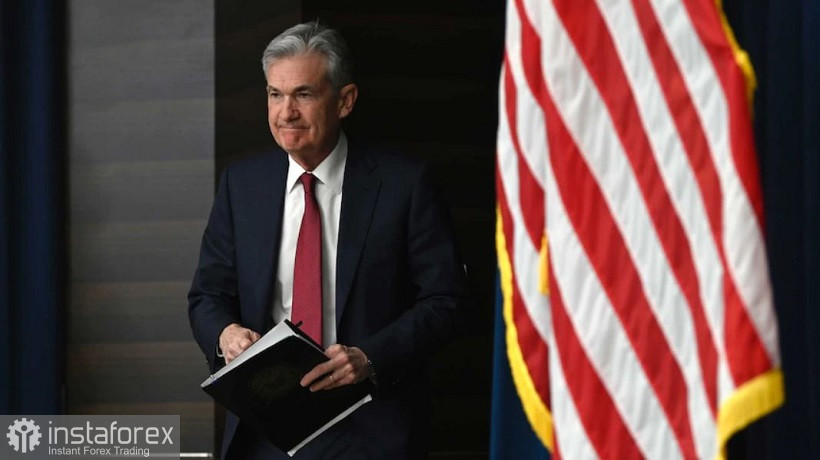The US Federal Reserve announced a 50-point rate hike and a reduction in the central bank's balance sheet on Wednesday. In other words, the regulator implemented the most expected scenario, thereby putting pressure on the greenback. The US currency, by and large, has become a victim of inflated expectations of traders.
On the eve of the May meeting, experts actively discussed the option of raising the interest rate by 75 basis points at once. After this idea was voiced by James Bullard (who, by the way, has the right to vote in the Committee this year), hawkish expectations have increased significantly. The market is increasingly talking about the fact that the regulator may decide to take such a step – if not at the May, then at the June meeting.
The hawkish flywheel has been spinning ever stronger, raising the bar for most traders' expectations. That is why the EUR/USD pair yesterday demonstrated a corrective growth in the area of the 6th figure, reacting to the results of the May meeting. The dollar sank throughout the market, despite the 50-point increase in the interest rate and the rather tough stance of Fed Chairman Jerome Powell.

Here it is necessary to immediately dot the i's: the EUR/USD pair shows only a corrective pullback, while there is no talk of a reversal of the downward trend. Greenback fell victim to the "buy the rumor, sell the fact" trading principle. Considering the hawkish hysteria that was growing in the information field on the eve of the May meeting of the Fed members, it is not at all surprising that the Fed did not live up to the hopes placed on it. Under the current conditions, the dollar would strengthen its positions only in one case: if the regulator implemented an ultra-hawkish scenario, increasing the rate by 75 points and announcing another similar increase at the June meeting. All other options were obviously losing for the dollar.
Only here it is necessary to understand – what is a loss for the greenback? And in particular, for EUR/USD bears? In my opinion, the sellers of the pair had a kind of window of opportunity yesterday: they can open short positions at a more favorable price without fear of catching the price bottom. After all, do not forget that the American regulator has de facto declared a rather aggressive pace of tightening monetary policy. "Moderate aggressiveness" played against the dollar, but this is only the reaction of the market "at the moment." If we talk about the medium-term prospects (not to mention the long-term), then here we see the obvious advantages of the greenback, especially in a pair with the euro.
Let's turn to the main theses of Fed Chair Powell, which were announced at yesterday's press conference. First, he said that the option of raising the rate by 50 basis points "will remain on the agenda for the next couple of meetings." This suggests that the regulator may decide to take 50-point steps at the June and July meetings. Second, Powell did not categorically rule out a 75-point hike. According to him, "members of the Committee are not actively considering this scenario."
Obviously, inflation will be the decisive factor here. If the main inflation indicators do not slow down, the US regulator will be forced (it is forced, this is the keyword) to go further with 50-point steps or really consider the option of a 75-point increase.
During his press conference, Powell expressed his hope that the second half of the year will see a "leveling" of inflation. In particular, he said, at the moment, "there is some evidence" that the core PCE is peaking.
Note that the Fed's most preferred inflation rate rose to 5.2% (in annual terms), while most experts predicted an increase to 5.3%. And yet this indicator still remains at the level of 39-year highs. The indicator has been consistently and steadily increasing for 6 months, and only in March slowed down its growth, and minimally. For comparison, it can be noted that at the beginning of last year, the PCE was in the range of 1.4%–1.9%. If the core PCE fluctuates around 5.0%–5.5% over the coming months, the Fed will have to not slow down, but on the contrary, tighten monetary policy at a more aggressive pace.
By the way, Powell yesterday admitted the possibility that instead of "leveling" inflation, the main inflation indicators will continue to grow. This is primarily due to the "Ukrainian case" and the wave of lockdowns in China. These issues are likely to limit progress in addressing supply chain problems, the Fed chief said.

Thus, yesterday the US Federal Reserve showed "moderate aggression," which "at the moment" disappointed many traders. However, this does not mean at all that a turning point has come for the EUR/USD pair. The divergence of the positions of the Fed and the ECB, in fact, only intensified, so it is impossible to talk about a trend reversal today.
It is noteworthy that the pair could not even overcome the nearest resistance level of 1.0640 (the Tenkan-sen line on the daily chart) to settle in the price range of 1.0640–1.0730 (where the upper ceiling is the middle Bollinger Bands line on the same timeframe). And yet today it is too early to open short positions – it is advisable to wait for some time (about a day), observing the behavior of the price. If the EUR/USD bears hold below 1.0640, then sales will be relevant again. If buyers are able to pull the pair into the area of the above range, then the correction may take a long time. However, in the medium-term (not to mention the long-term), the downward trend will still be in force, with the main targets at 1.0550, 1.0500, 1.0450.





















